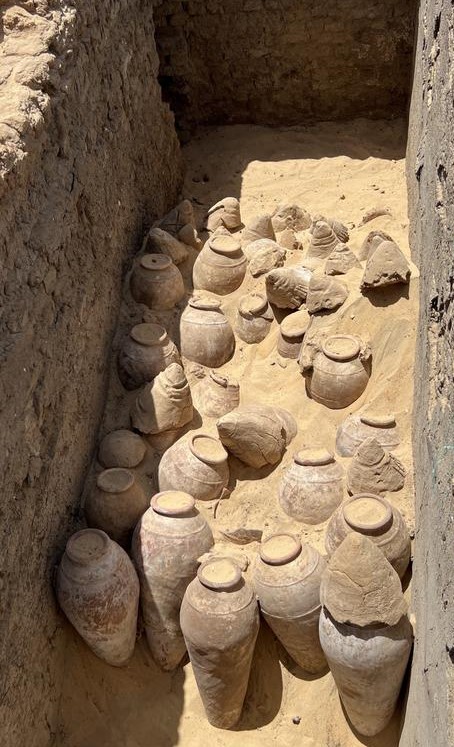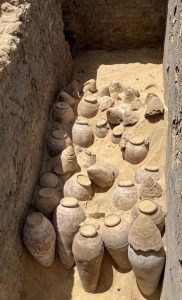
Pic Courtesy Newsweek

Pic Courtesy Newsweek
Posted: Tuesday, 17 October 2023 22:40

Queen Meret-Neith was presumably the most powerful woman in around 3000 BCE and suspected to be the first pharaoh of ancient Egypt. She was the only woman to have her own monumental tomb in Egypt’s first royal cemetery at Abydos, preceding Queen Hatshepsut of the 18th dynasty. Her true identity is still a mystery but new excavations are shedding light on her and the times she lived in.
Abydos is one of the oldest and most important sites of ancient Egypt, occupied from as early as 3300 BC. Located on the west bank of the Nile in Upper Egypt, over 500 km south of Cairo, this sacred city overlooks a desert valley once believed to offer passage to the kingdom of the dead.
The Queen’s monumental tomb complex in the Abydos desert includes the tombs of 41 courtiers and servants in addition to her own burial chamber. It was built with unbaked mud bricks, clay, and wood. Thanks to the new archaeological technologies, the team has shown that the tombs were built in several phases, over a relatively long period of time.
According to a Story in Newsweek many of the wine jars are in a good state of preservation and some even remain unopened with their closures still intact. The jars were found to contain organic residue that the researchers interpret as the remains of 5,000-year-old wine. The team also found a large quantity of well-preserved ancient grape seeds inside the jars.
In addition, inscriptions testify that Queen Meret-Neith was responsible for establishing central government offices such as the Treasury, thus supporting the idea of her special historical significance. The cache also seems to indicate that she believed she would be able to take the horde to her next destination. With plenty of research yet to be done, there is a possibility that this discovery could provide some insights into ancient wine production and extend the life of wine beyond what we know today.
However, delWine is of the view that since wine is considered a living thing, and one has seen thousands of examples when the wine dies after a certain age and generally even a 100 years is considered too long for a well-known wine to survive and remain drinkable. It is not at all likely that the wine would offer any insight into the tastes 5000 years ago. It has already solidified and the researchers cannot even tell if it was red wine or white. Right now talks are going on whether someone should even venture to taste the remains of the wine. But the research will provide good insight into the winemaking process and ingredients of this wine. To that extent it has great historical significance.
Subhash Arora
